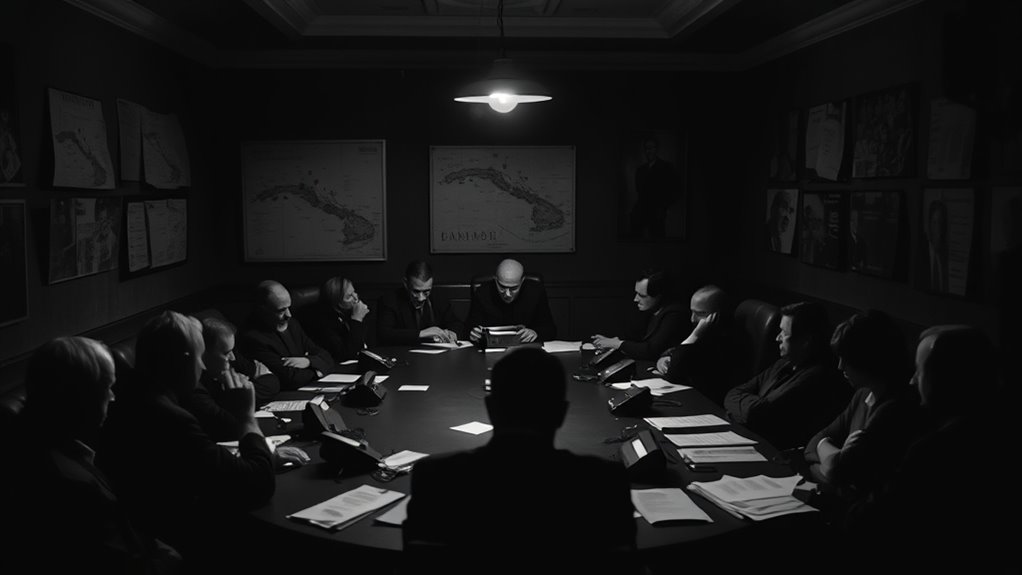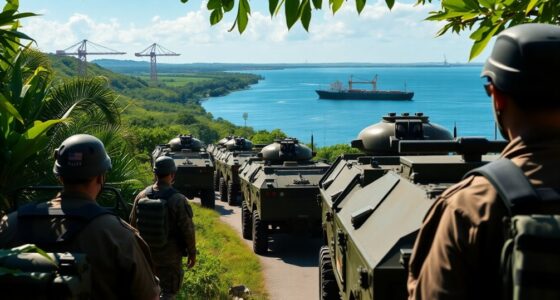The Cuban Missile Crisis offers key intelligence lessons for today's AI era. You can improve crisis management by extending decision-making timeframes and prioritizing thorough analyses. Recognizing anomalies in intelligence is essential for timely threat detection, especially with the rise of cyber risks. AI can enhance situational awareness, but it's imperative to maintain human oversight to avoid catastrophic miscalculations. This historical context provides valuable insights for steering through contemporary security challenges and shaping future strategies. There's much more to explore.
Key Takeaways
- Effective decision-making processes from the CMC highlight the importance of thorough analysis before acting in AI-enhanced military environments.
- Anomaly recognition in intelligence is crucial; AI can assist in detecting irregularities that signal potential threats.
- Public engagement and education on nuclear risks are essential, emphasizing the need for informed citizens in the AI age.
- Human oversight in AI systems is critical to prevent catastrophic miscalculations, reflecting lessons learned from historical crises like the CMC.
- Strengthening communication channels among nations can prevent misunderstandings, vital in both historical contexts and modern AI-driven security landscapes.
The Significance of the Cuban Missile Crisis Today
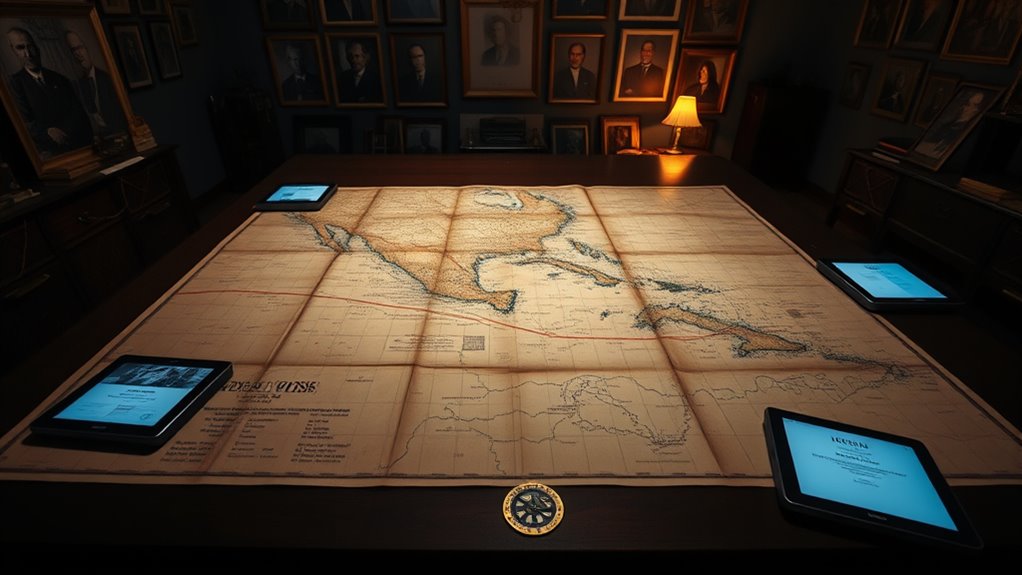
While the Cuban Missile Crisis may have occurred over six decades ago, its significance resonates powerfully in today's geopolitical climate. The crisis underscores the important need for effective crisis management amid ongoing tensions like Russia's threats involving tactical nuclear weapons in Ukraine.
You'll find that the lessons learned from the Cuban Missile Crisis remain essential for national security strategies, particularly regarding timely intelligence and accurate assessments of adversary capabilities. Communication failures during the CMC serve as a reminder for today's leaders to prioritize open dialogue and transparency to prevent misunderstandings that could lead to conflict.
Additionally, the legacy of the CMC has shaped significant arms control agreements that continue to be important frameworks for managing contemporary nuclear threats.
Impact on U.S.-Russian Relations and Ideological Competition
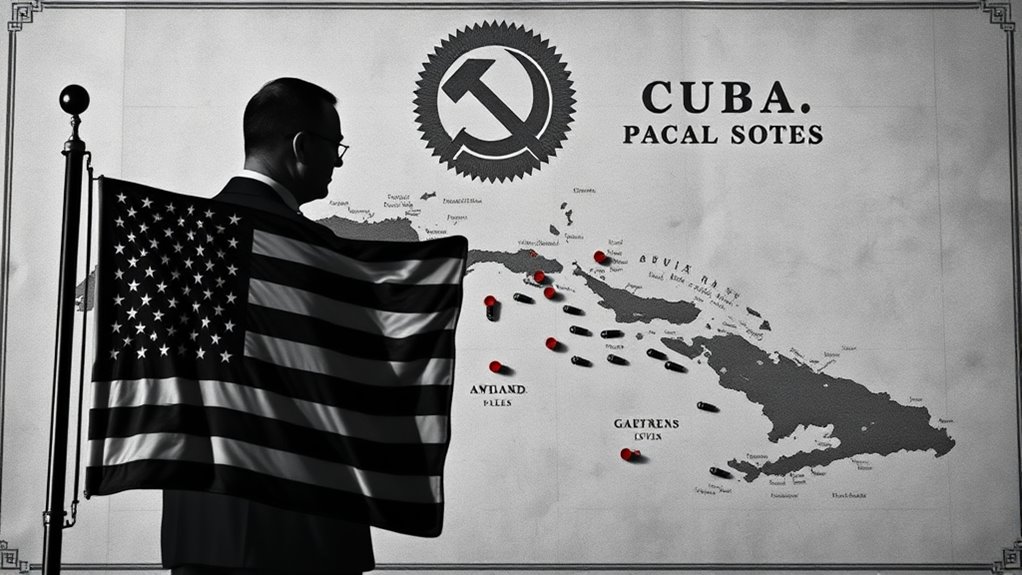
The Cuban Missile Crisis not only shaped the course of U.S.-Soviet relations but also intensified the ideological competition that defined the Cold War.
The reality of Mutual Assured Destruction (MAD) forced both nations to recognize the catastrophic consequences of nuclear conflict, altering their decision-making process. This understanding led to initiatives like the Hot Line and the Nuclear Test Ban Treaty, aimed at reducing the risks of miscalculation.
However, complacency over time has diminished urgency around nuclear threats, complicating U.S.-Russian relations. The crisis serves as a stark reminder that ideological competition can escalate tensions between nuclear powers.
To prevent future conflicts, ongoing dialogue and cooperation are essential in addressing the arms race and fostering trust between these two nations.
Lessons for Modern Crisis Management
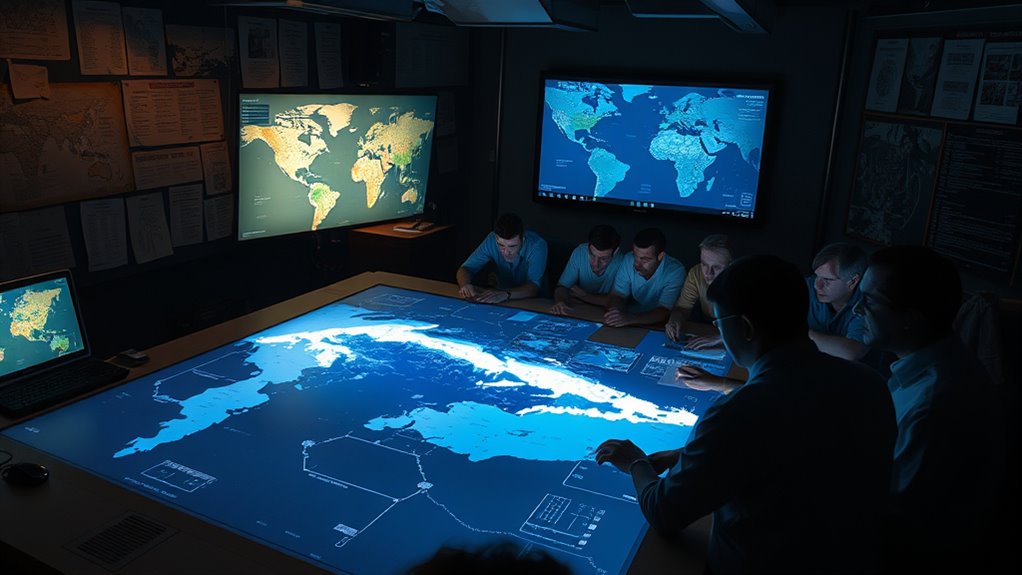
In today's fast-paced world, enhancing decision-making processes is essential for effective crisis management.
You need to prioritize open communication channels and develop anomaly detection techniques to stay ahead of potential threats.
Enhancing Decision-Making Processes
Recognizing that effective decision-making can prevent crises from escalating, modern leaders can draw valuable lessons from the Cuban Missile Crisis. Extending decision-making timeframes is essential; it helps avoid irreversible actions. Additionally, addressing organizational deficiencies in intelligence analysis, such as fragmentation, is important. Timely recognition of anomalies can improve signal detection. Understanding psychological factors in decision-making remains fundamental, as these influences can affect responses in conflicts. Furthermore, leveraging AI-driven data analytics can enhance the accuracy of threat assessments and improve overall situational awareness.
| Key Lesson | Application in Crisis Management | Impact on Decision-Making |
|---|---|---|
| Extend Decision Time | Allow for thorough analysis | Reduces risk of hasty decisions |
| Improve Intelligence | Foster collaboration among agencies | Enhances situational awareness |
| Recognize Anomalies | Prioritize signal detection | Informs immediate responses |
| Acknowledge Psychology | Understand human factors | Improves team dynamics |
| Adapt Analytical Frameworks | Stay responsive to threats | Supports proactive strategies |
Importance of Communication Channels
Open and transparent communication channels are essential in crisis management, as demonstrated during the Cuban Missile Crisis. Misunderstandings can escalate tensions, leading to nuclear confrontation.
The establishment of the Washington-Moscow Hot Line underscored the urgency for immediate communication to prevent miscalculations.
To improve modern crisis management, consider these key strategies:
- Create robust communication mechanisms like hotlines and crisis negotiation teams.
- Extend decision-making timeframes through effective communication, allowing for careful deliberation.
- Ensure clear communication protocols to accurately convey intentions and prevent escalation.
Anomaly Detection Techniques
While analyzing intelligence during the Cuban Missile Crisis, the need for effective anomaly detection became starkly evident.
You'll find that the CIA sifted through 3,500 reports, with only a few valid signals. Rigid compartmentation led analysts to overlook critical military operations, such as the presence of 41,900 Soviet troops—ten times higher than estimates.
This failure in anomaly detection highlights the risks of misinterpretation and delayed recognition of threats, which can lead to strategic surprise. Historical events, like China entering the Korean War, reinforce that successful intelligence analysis relies on identifying and addressing anomalies.
Strategies to Mitigate Future Nuclear Crises
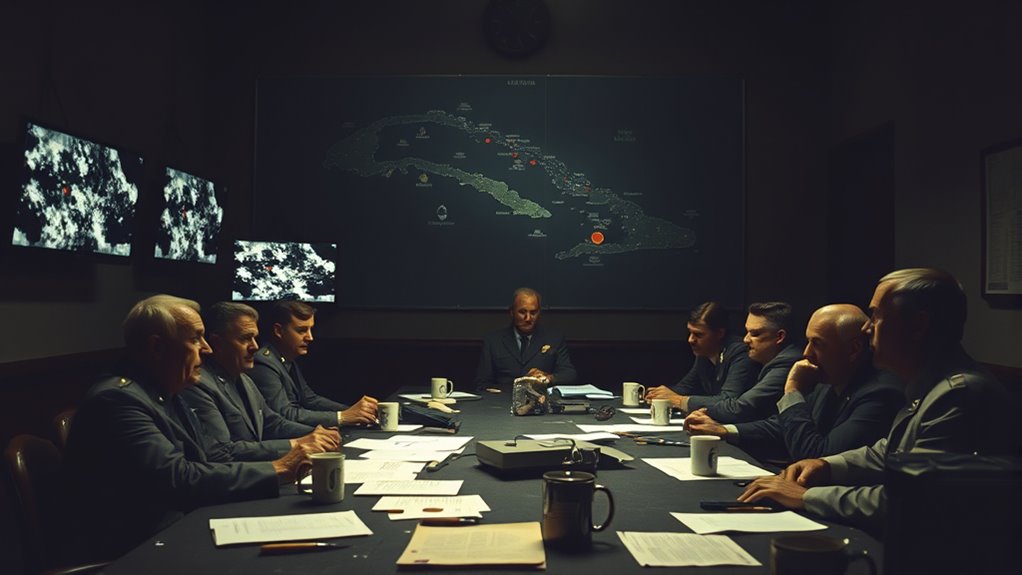
To effectively mitigate future nuclear crises, it's crucial to establish and maintain open communication channels between nuclear powers. This approach can help you avoid nuclear dangers that arise from misunderstandings.
Here are some strategies to contemplate:
- Establish direct hotlines: Similar to the Cold War-era Hot Line, strengthen direct communication lines, like between Russia and Ukraine, to facilitate quick conflict de-escalation.
- Strengthen international norms: Promote strong global agreements against nuclear weapons, ensuring leaders recognize the catastrophic consequences of misjudged actions.
- Implement crisis management frameworks: Develop robust systems with strategic redundancies and clear command and control protocols to handle crises effectively.
The Role of Cyber Threats in Contemporary Security
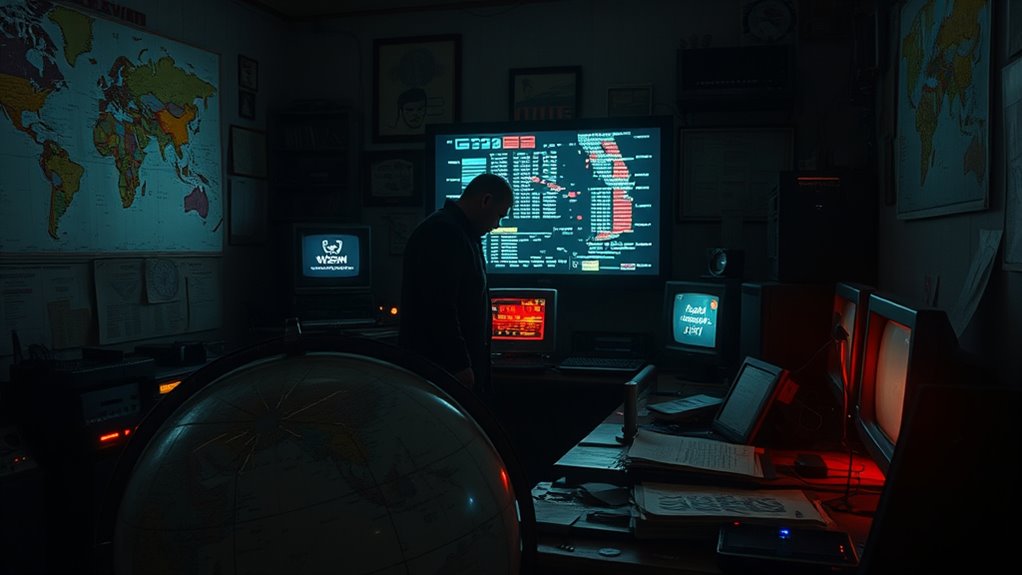
As cyber threats continue to evolve, they greatly complicate the landscape of contemporary security, particularly concerning nuclear tensions. These vulnerabilities introduce anxiety, complicating decision-making processes and heightening the risk of inadvertent nuclear use. Automated military responses to cyber threats can escalate tensions, leading to unintended nuclear engagements.
To navigate this complexity, situational awareness is vital. The table below summarizes essential aspects of cyber threats in current security contexts:
| Aspect | Implication | Example |
|---|---|---|
| Cyber Vulnerabilities | Increased nuclear risk | Automated command structures |
| Signal Detection | Complicated decision-making | NSA's 200 million daily interceptions |
| Anomaly Recognition | Timely crisis response | Historical lessons from the Cuban Missile Crisis |
| Public Engagement | Educating future generations | Advocacy for nuclear risk awareness |
Understanding these elements is key to enhancing security today.
AI's Influence on Military Decision-Making
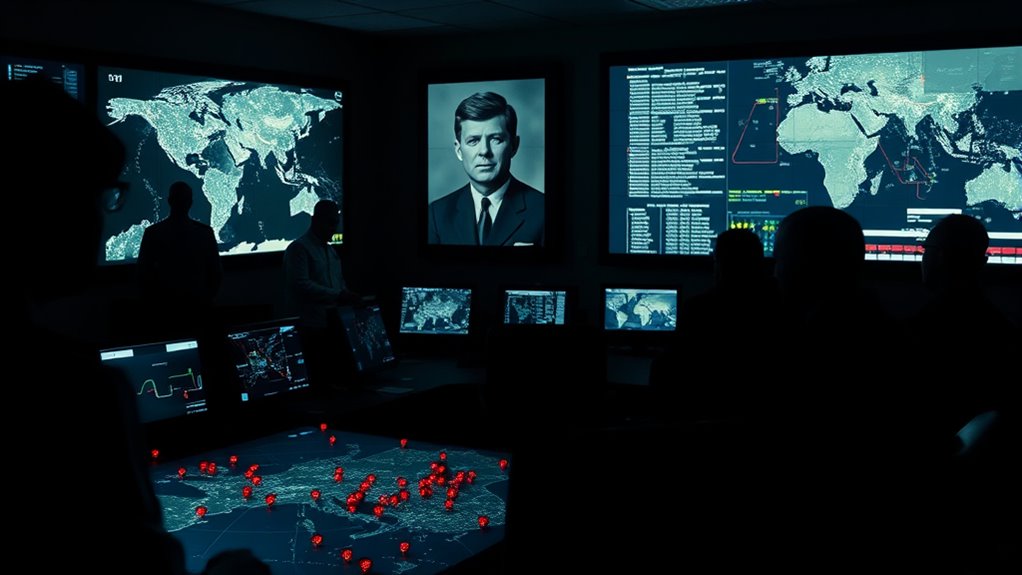
AI's influence on military decision-making is transforming how you assess risks and make choices in real time.
By leveraging AI-driven decision support and enhancing predictive analytics, you can respond faster and more accurately to dynamic battlefield conditions.
However, as you embrace these technologies, it's vital to contemplate the implications of automating risk assessments and maintaining human oversight.
AI-Driven Decision Support
While military decision-making has traditionally relied on human analysis, the emergence of AI-driven decision support is transforming how strategies are formulated and executed on the battlefield.
By rapidly processing vast amounts of data, AI enhances your ability to respond to dynamic conditions, improving situational awareness and leading to informed tactical decisions.
- AI simulates combat scenarios, allowing you to explore outcomes before engaging in conflict.
- These systems operate faster within the OODA loop, achieving decision superiority.
- Ethical dilemmas arise concerning autonomy and accountability, highlighting the need for human oversight to prevent unintended escalation.
AI's influence on military operations is vital, especially when considering the implications of a potential nuclear exchange.
Enhancing Predictive Analytics
Enhanced predictive analytics can considerably reshape military decision-making, especially in high-stakes scenarios reminiscent of the Cuban Missile Crisis.
By leveraging AI technologies, you can process vast amounts of intelligence data faster than human analysts, reducing the chances of misinterpretation. This capability allows for the creation of predictive models that simulate various scenarios, enabling more informed responses to potential threats.
Enhanced predictive analytics also improves signal detection and anomaly recognition, addressing past failures in timely information sharing among intelligence agencies.
With AI-driven analytics, you can extend the decision-making runway, emphasizing the importance of deliberation over hasty, irreversible choices during tense situations, just as the lessons learned from the Cuban Missile Crisis have taught us.
Risk Assessment Automation
As military leaders navigate complex decision-making landscapes, automating risk assessment through AI can markedly enhance their capabilities. By leveraging AI, you can rapidly analyze vast data sets, improving intelligence and situational awareness.
This transformation helps mitigate the human errors seen during the Cuban Missile Crisis, where misinterpretations led to catastrophic decisions.
- AI systems identify anomalies that signal emerging nuclear threats.
- Automation streamlines risk assessment processes, ensuring timely and accurate evaluations.
- Ethical considerations around reliance on AI echo past concerns about human oversight.
Integrating AI into military decision-making not only boosts efficiency but also raises important questions about the balance between automated systems and human judgment in high-stakes scenarios.
Ensuring Human Oversight in Automated Systems
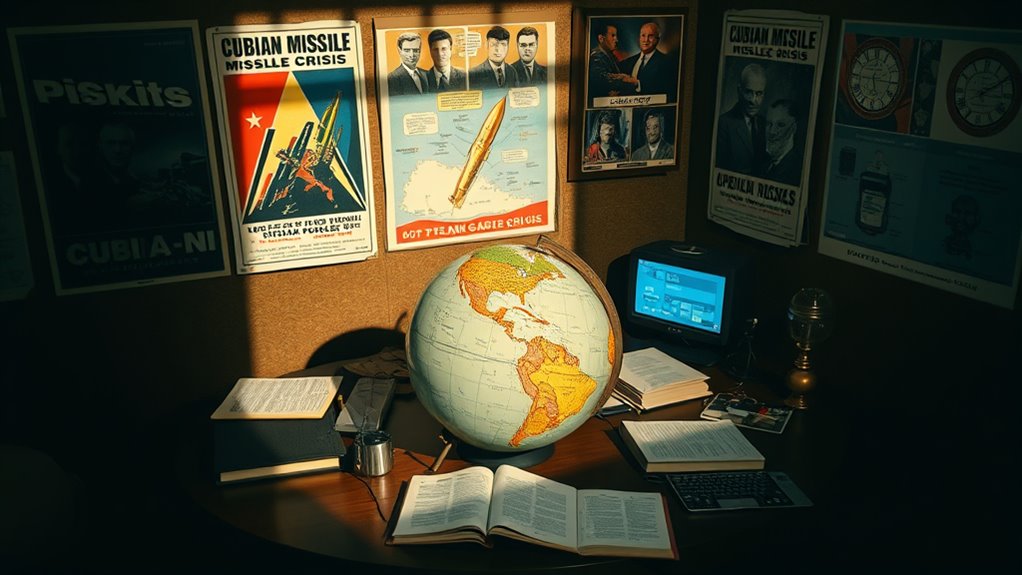
Given the complexities of modern warfare, ensuring human oversight in automated systems is essential to prevent catastrophic miscalculations.
The Cuban Missile Crisis showed us that even advanced technology can't replace human judgment. Vasili Arkhopov's intervention averted nuclear escalation, highlighting how critical human insight is in crisis situations.
Automated systems might act quickly, but they lack the emotional understanding necessary to navigate the nuances of tense scenarios. Misinterpreting conditions can lead to disastrous outcomes, which is why integrating human oversight into military automation is non-negotiable.
Balancing AI efficiency with human decision-making can help avoid the pitfalls of autonomous actions, ensuring we don't repeat the intelligence failures of the past that underestimated threats and escalated tensions.
Frequently Asked Questions
What Was the Intelligence During the Cuban Missile Crisis?
During the Cuban Missile Crisis, intelligence assessments underestimated the military threat from Cuba and the Soviet Union.
You'll find that early estimates downplayed the presence of Soviet forces, despite significant arms buildup.
Even as evidence mounted, intelligence agencies misjudged Soviet intentions, resulting in serious underpreparedness.
Fragmentation within these agencies hindered effective communication, emphasizing the need for timely anomaly recognition and better analysis processes to interpret threats accurately in future situations.
What Are the Lessons of the Cuban Missile Crisis?
The lessons from the Cuban Missile Crisis remind you of the importance of accurate intelligence and effective communication.
You need to recognize potential threats early and avoid underestimating adversaries. It's essential to maintain open channels among intelligence agencies to share information swiftly.
Additionally, you should focus on enhancing analytical capabilities to interpret signals correctly, ensuring preparedness for unexpected developments.
These insights can help prevent future crises and mitigate risks associated with escalating tensions.
What Was the Overall Message of the Cuban Missile Crisis?
The overall message of the Cuban Missile Crisis is clear: effective communication and accurate intelligence are essential in preventing conflict.
You see how misjudgments can escalate tensions, leading to potentially disastrous outcomes. It's important to stay vigilant and assess threats accurately, rather than becoming complacent.
Was the CIA Involved in the Cuban Missile Crisis?
Imagine a world teetering on the brink, shadows of uncertainty lurking everywhere.
Yes, the CIA was deeply involved in the Cuban Missile Crisis. They sifted through thousands of intelligence reports, trying to piece together the puzzle of Soviet presence in Cuba.
Yet, despite their efforts, they underestimated the scale of the threat. Their misjudgments shaped key decisions, underscoring how vital accurate intelligence is when the stakes are sky-high.
Conclusion
The Cuban Missile Crisis teaches us that even in the age of AI, human judgment remains vital. While technology can analyze data faster than ever, it can't replace the nuanced understanding of human relationships and motivations. As we face new threats, like cyber warfare, we must remember that the stakes of miscommunication can be dire. Embracing AI's capabilities while ensuring human oversight will help us navigate future crises more wisely, preventing history from repeating itself.
